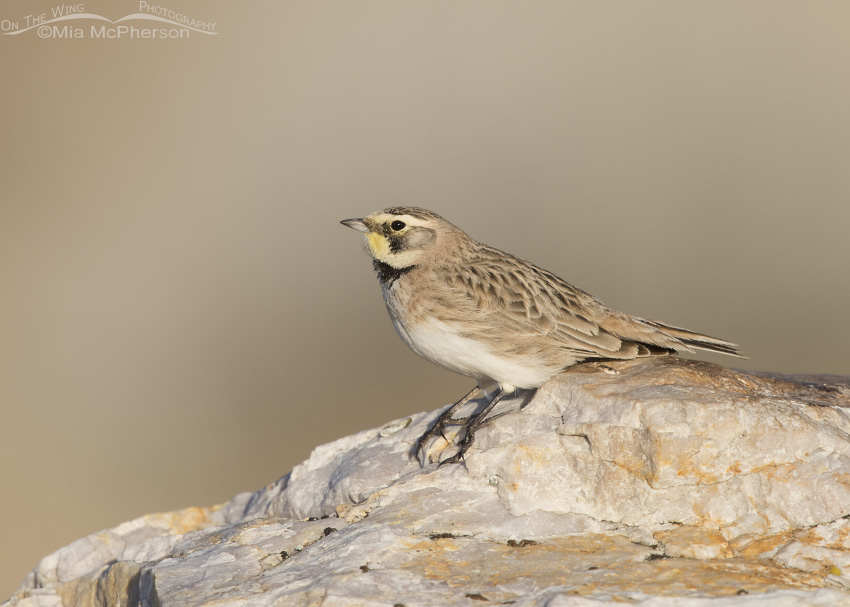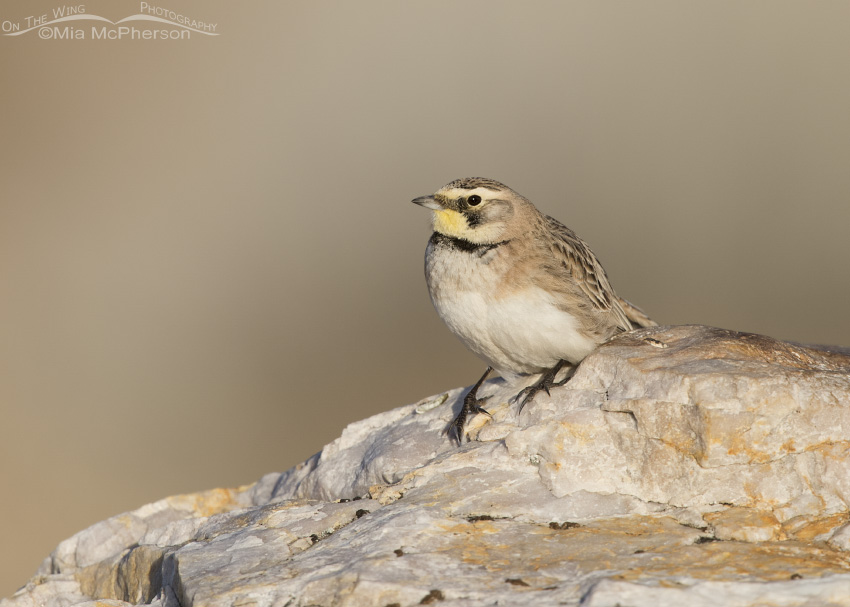 West Desert Horned Lark female – Nikon D810, f6.3, 1/1000, ISO 320, Nikkor 500mm VR with 1.4x TC, natural light
West Desert Horned Lark female – Nikon D810, f6.3, 1/1000, ISO 320, Nikkor 500mm VR with 1.4x TC, natural light
I have been seeing Horned Larks by the thousands here in southern Utah but they haven’t been very cooperative, for that matter so far the only bird I have gotten high quality images of is the Peregrine Falcon that I posted yesterday.
This West Desert Horned Lark in golden light was taken in the foothills of the Stansbury Mountains of Tooele County on a clear morning last month.
 Female West Desert Horned Lark at sunrise – Nikon D810, f6.3, 1/1000, ISO 320, Nikkor 500mm VR with 1.4x TC, natural light
Female West Desert Horned Lark at sunrise – Nikon D810, f6.3, 1/1000, ISO 320, Nikkor 500mm VR with 1.4x TC, natural light
Horned Larks return to the breeding grounds where they hatched every migration. Because they do local populations have adapted to the colors found in their habitat in their plumage which gives us about 15 distinct subspecies in the western part of their range. The Horned Larks I have photographed in southern Utah have been paler overall than the larks I photograph in northern Utah.
I hope to find and photograph more birds today. I also hope the wind won’t be as much of a problem as it has been my first two days down here. It was miserable for a while.
Life is good.
Happy St. Patrick’s Day.
Mia
Click here to see more of my Horned Lark photos plus facts and information about this species.


A subtle charmer. And I love that they have adapted so well to differing conditions.
Love the picture and find the comments very interesting…15 subspecies!!!
Very nice to see your version of this lovely open country bird. A much lighter form than ours that we find between cut corn rows and around the bare ground of Vermont dairy farms. Thanks again for sharing your images!
IT’S NICE WHEN GETTING UP EARLY, AND OUT INTO THE FIELD PAYS OFF WITH GREAT SHOT.S..
IT LOOKS LIKE THIS BIRD IS RESTING HIS “TUCKUS” ON THE ROCK, INSTEAD OF STANDING ON HIS FEET… HA
THANKS MIA FOR ADDING A SMILE TO MY MORNING… ;-)))